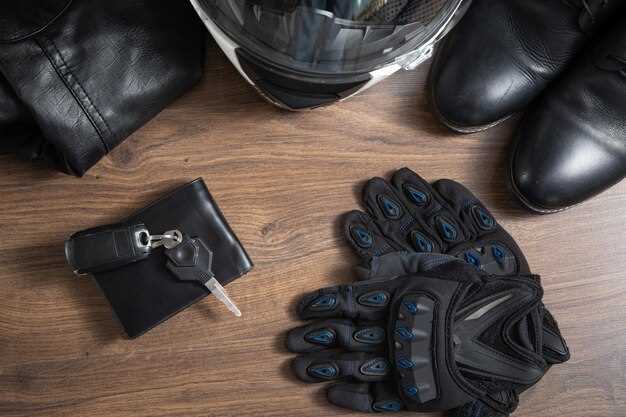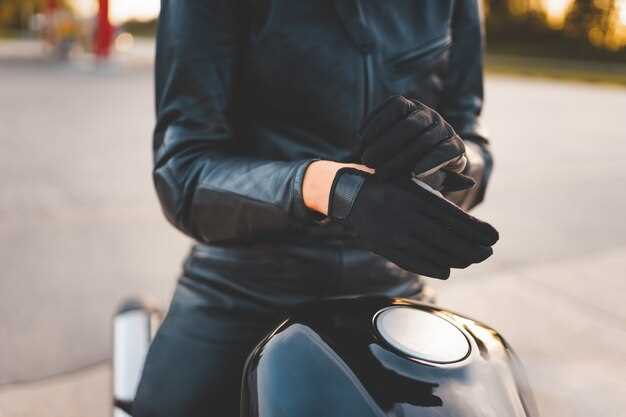
Why Motorcycle Gloves Are Essential for Safety

When it comes to motorcycle riding, protective gear plays a pivotal role in ensuring the safety of riders. Among the various components of this gear, motorcycle gloves are often overlooked, yet they serve essential functions that can significantly impact a rider’s safety and comfort on the road.
Motorcycle gloves are designed to provide more than just a grip on the handlebars. They offer crucial protection during rides, including features such as abrasion resistance, impact protection, and weather resistance. By wearing high-quality gloves, riders can better shield their hands from injuries in the event of a fall, making them an indispensable part of any safety-conscious rider’s gear.
Furthermore, gloves enhance overall riding control and comfort. They absorb vibrations, maintain warmth in colder weather, and keep hands dry in wet conditions. Therefore, the benefits of investing in proper motorcycle gloves extend beyond protection, contributing to a more enjoyable and confident riding experience.
Key Features of Motorcycle Gloves for Enhanced Grip and Control
Motorcycle gloves are an essential piece of protective gear that play a significant role in ensuring a rider’s safety and comfort. One of the most critical aspects of these gloves is their ability to provide an enhanced grip and control. Here are the key features that contribute to this functionality:
Material Composition: The choice of materials used in motorcycle gloves directly affects grip. High-quality leather and synthetic fabrics offer excellent traction while maintaining flexibility. Leather, in particular, molds to the rider’s hands over time, providing a natural fit that enhances control.
Textured Palm: Gloves designed for motorcycle use often feature textured palms and fingers. This textured surface increases friction against the handlebars, ensuring a firm grip even in wet conditions. Additionally, silicone or rubberized prints can be strategically placed on the palms to enhance grip further.
Pre-Curved Design: A pre-curved design is another important feature that helps riders maintain a natural hand position when gripping the throttle or brake. This ergonomic design reduces fatigue during long rides, allowing for better control and responsiveness.
Adjustable Cuffs: Many motorcycle gloves come with adjustable wrist closures that ensure a snug fit. A secure wrist keeps the gloves in place, preventing any slippage while riding. This feature also helps to minimize wind and debris from entering the gloves, allowing for uninterrupted focus on control.
Touchscreen Compatibility: In today’s digital age, many riders prefer gloves that allow them to use touchscreen devices without removing them. Touchscreen-compatible fingertips offer convenience while ensuring that grip is not compromised.
Reinforced Areas: Those parts of the gloves that receive the most wear, such as the palms and knuckles, are often reinforced with additional padding or protective materials. This not only enhances durability but also provides a more secure grip when maneuvering the motorcycle.
In conclusion, the key features of motorcycle gloves significantly impact grip and control. From material composition to design elements, each aspect plays a vital role in enhancing a rider’s experience while promoting safety on the road.
Choosing the Right Material for Optimal Protection and Comfort

Selecting the appropriate materials for motorcycle gloves is vital for ensuring both protection and comfort while riding. The right combination of materials can significantly enhance safety and improve the overall riding experience.
When considering material options for gloves, several key factors should be taken into account:
- Leather: Often regarded as the gold standard for motorcycle gloves, leather provides excellent abrasion resistance. It also molds to the shape of the hand over time, providing a snug fit. Full-grain leather is especially durable and offers the best protective properties.
- Textiles: Synthetic textiles, such as nylon or Cordura, are also popular choices. They tend to be lighter and more breathable than leather, making them suitable for warm weather. Quality textile gloves often come with reinforced areas for added protection.
- Armour: Incorporating armor, such as knuckle protectors made from hard plastic or carbon fiber, can enhance the protective capabilities of gloves. Gloves with built-in armor offer a crucial barrier against impacts during falls.
- Waterproof Linings: For those riding in varying weather conditions, gloves with waterproof membranes, like Gore-Tex, provide comfort and keep hands dry. Wet hands can lead to discomfort and reduced grip.
- Insulation: For cold weather riding, consider gloves that include insulation materials. Thinsulate and fleece are popular options that retain warmth while remaining thin enough for dexterity.
Additionally, the inner linings of gloves should not be overlooked. Soft, moisture-wicking materials can enhance comfort by reducing sweat buildup, while seamless construction can minimize chafing during long rides.
In summary, the ideal motorcycle gloves should combine durability, comfort, and protective features. By understanding the advantages of different materials, riders can make informed choices, ensuring they are well-equipped for their journeys.
Maintenance Tips to Extend the Life of Your Motorcycle Gloves

Motorcycle gloves are an essential protective gear that can significantly enhance rider safety. However, to ensure your gloves provide maximum protection and last longer, proper maintenance is crucial. Here are some tips to help you maintain your motorcycle gloves effectively.
First and foremost, regularly clean your gloves according to the manufacturer’s instructions. Dirt, grime, and sweat can degrade the materials over time, affecting their protective attributes. Use a mild detergent and lukewarm water for cleaning, and avoid harsh chemicals that may damage the gloves.
After cleaning, it’s important to dry your gloves properly. Avoid direct sunlight and high heat sources, as these can cause materials to crack and lose their flexibility. Instead, allow your gloves to air dry in a cool, shaded area. This helps preserve the integrity of the protective layers.
Inspect your gloves frequently for any signs of wear and tear. Look for frayed seams, worn-out padding, or any tears in the fabric. Early detection of these issues can prevent more significant damage and ensure that the protective features remain intact.
Store your motorcycle gloves in a dry, cool place when not in use. Avoid folding them in a way that causes creases or excessive pressure on specific areas. Proper storage will help maintain their shape and functionality.
If your gloves are made of leather, consider applying a conditioner periodically to keep the material supple. This helps prevent cracking and extends their lifespan while maintaining the protective qualities that leather offers.
Finally, be mindful of the fit. Gloves that are too tight can cause premature wear, while those that are too loose may not provide adequate protection. Always choose gloves that offer a snug but comfortable fit to ensure they last longer and perform effectively in protecting your hands.